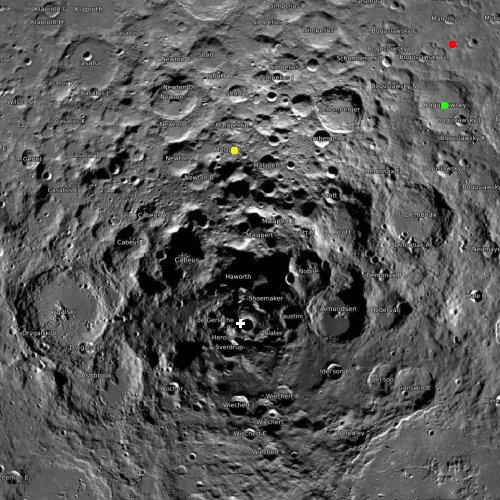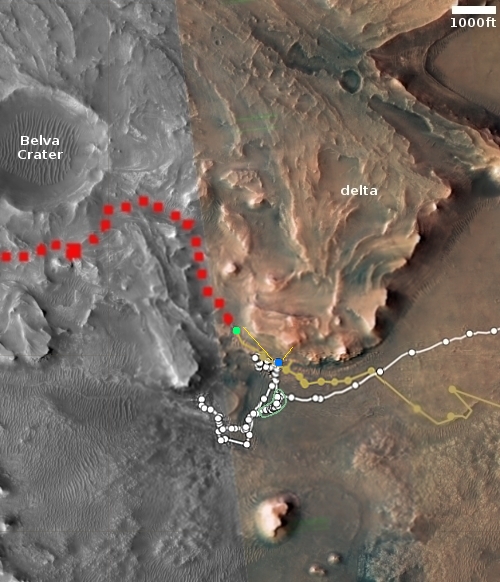Astronomers find ring around distant dwarf planet Quaoar
The uncertainty of science: Astronomers have confirmed the existence of an uneven ring encircling the dwarf planet Quaoar, orbiting far enough from the planet that, according to present theories, the ring should have quickly coalesced into a small Moon.
At 1,110 km (690 miles) in diameter Quaoar is one of the largest objects known in the outer solar system. Its single moon, named Weywot, spans about 160 km and was discovered in Hubble images in 2007. But the first signs of material around Quaoar didn’t come until 2018; even then, evidence was insufficient to call it a ring, says Morgado. He began studying Quaoar in 2020 with the European Space Agency’s CHEOPS space telescope, originally designed to find and characterize exoplanets. Rather than looking for exoplanet transits, Morgado used CHEOPS to observe stellar occultations, when Quaoar passed in front of distant stars and momentarily blocked their light.
Now Morgado has extended his work, working with others to observe Quaoar’s stellar occultations using other telescopes. The team first predicted a few occultations and recorded them. Then, after those observations hinted at a ring, the researchers went back through previous occultation records. “We saw the ring in nine different regions, from observations taken between 2018 and 2021,” Morgado explains.
In Nature, the team reports the presence of a ring 4,100 kilometers from the center of Quaoar, far beyond its classical Roche limit of 1,780 km. Morgado says the ring is dense and irregular. “It has a very thin region about 5 km wide and also a large region about 300 km wide, depending on which part of the ring was probed,” he notes. If the material could all be collected into a single moon, it would be about 10 km in diameter, less than a tenth of Weywot’s size.
According to astronomers, they would expect such a ring at that distance to coalesce in just a matter of decades. Either their theories of the Roche limit are incorrect, or the creation of this ring is very very recent, caused by the collusion of two objects that were orbiting Quaoar.
The uncertainty of science: Astronomers have confirmed the existence of an uneven ring encircling the dwarf planet Quaoar, orbiting far enough from the planet that, according to present theories, the ring should have quickly coalesced into a small Moon.
At 1,110 km (690 miles) in diameter Quaoar is one of the largest objects known in the outer solar system. Its single moon, named Weywot, spans about 160 km and was discovered in Hubble images in 2007. But the first signs of material around Quaoar didn’t come until 2018; even then, evidence was insufficient to call it a ring, says Morgado. He began studying Quaoar in 2020 with the European Space Agency’s CHEOPS space telescope, originally designed to find and characterize exoplanets. Rather than looking for exoplanet transits, Morgado used CHEOPS to observe stellar occultations, when Quaoar passed in front of distant stars and momentarily blocked their light.
Now Morgado has extended his work, working with others to observe Quaoar’s stellar occultations using other telescopes. The team first predicted a few occultations and recorded them. Then, after those observations hinted at a ring, the researchers went back through previous occultation records. “We saw the ring in nine different regions, from observations taken between 2018 and 2021,” Morgado explains.
In Nature, the team reports the presence of a ring 4,100 kilometers from the center of Quaoar, far beyond its classical Roche limit of 1,780 km. Morgado says the ring is dense and irregular. “It has a very thin region about 5 km wide and also a large region about 300 km wide, depending on which part of the ring was probed,” he notes. If the material could all be collected into a single moon, it would be about 10 km in diameter, less than a tenth of Weywot’s size.
According to astronomers, they would expect such a ring at that distance to coalesce in just a matter of decades. Either their theories of the Roche limit are incorrect, or the creation of this ring is very very recent, caused by the collusion of two objects that were orbiting Quaoar.











